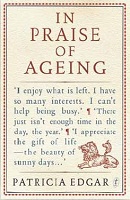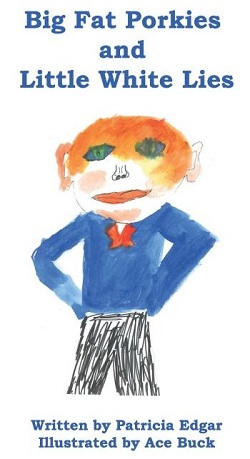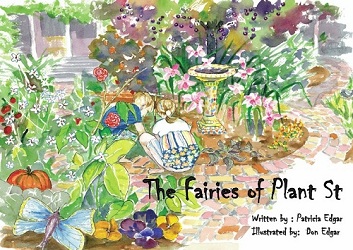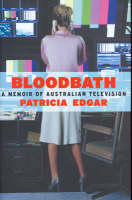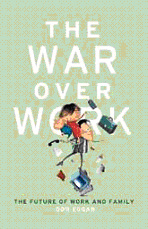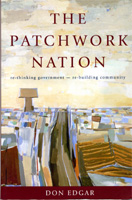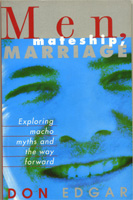ACTF: Patricia Edgar reflects on a famous anniversary
by: Patricia Edgar
Screen
Hub
Tuesday 6 March, 2012
The ACTF was built in the
teeth of opposition by an alliance of visionaries with great cunning and
determination. Patricia Edgar, founding director of the ACTF, describes the
history, and pays tribute to the activists behind the scenes. In this year of
regulatory turmoil, there is much to learn from their story.
The ACTF is unique in the world, and as founding director I have often been
asked how it came to be.
It has been said that the members of the Australian Education Council (AEC)
decided one day to set up an ACTF. Nothing in political life happens so simply
and the ACTF is no exception. This is a snapshot which looks back to the
origins, remembers how and why the ACTF came to be and acknowledges the
people responsible.
Children's television in Australia had begun with promise in the late 1950's.
Programming was driven by the industry's need to sell television sets and the
marketers needed kids' programs in the schedule to pitch set sales to
families. Some fine, live, studio-based children's programs were produced
including the Magic Circle Club, Adventure Island and Mr
Squiggle.
Yet once television services penetrated most households - and Australians
took to television with great relish very quickly - the stations dropped
their children's programs and scheduled cheaper old American sitcom repeats
after school. Locally produced children's programs were virtually
non-existent by the late 60's.
Advocating for children to be provided with quality media has been the
central preoccupation of my long career. When I turned 30 I took the first
step down a path which led to the ACTF. I enrolled in a Film, Television and
Communication Studies Master's degree at Stanford University in the USA. It
was a turbulent time in America when the activist Abbie Hoffman popularized
the view that you 'don't trust anyone over 30'. By then it was thought,
ideals had been compromised by the system. I planned to be an
exception.
I returned from the United States in 1969 and set up a new Media Centre at
Latrobe University. I spent rugged years establishing the first film and
television theory and production courses in an Australian university and
earnt a reputation as a fighter.
From 1972 Gough Whitlam's Labor government, as part of its radical change
program, began appointing women to posts they had not occupied before and to
committees where they had not been represented. Broadcasting reform and
public broadcasting were on the agenda for the first time. The Australian
Broadcasting Control Board (ABCB) was feeling pressure to demonstrate it was
not inert and it set up an Advisory Committee on Program Standards. I was
invited to become a member and then elected to chair the committee. The terms
of reference were broad ? 'to undertake a general view of the objectives
towards which program standards should be directed'.
Shortly after that appointment I was invited by the Whitlam government to
become a member of the ABCB itself - the first woman to fill such a role. As
both a member of the ABCB and Chair of the Advisory Committee I had access to
information that would not normally have been available to a Committee and I
was determined to do a thorough job. I had an excellent Committee to work
with and a well informed Executive Officer in Ursula Callus.
The industry was livid when the recommendations in the Edgar Report were
released publicly. Among other things the Report recommended a blueprint for
the reform of children's broadcasting standards. This Committee devised the C
classification, recommending a children's quota and pre-approval of programs
before they went to air.
The television industry was always crying wolf, saying the networks couldn't
afford Australian programs. Knowing we would be lighting a fuse that would
grab attention, we recommended the abolition of one television network in
each capital city to increase the advertising pie to the other networks to
pay the bills. Hal Todd of the 10 Network described me on air as, 'a doctor
of clothes pegs who didn't know which end she was talking out of.'
Reform was short-lived. Whitlam was sacked and Malcolm Fraser sacked the
ABCB. The new government set up an Australian Broadcasting Tribunal (ABT) and
Kerry Packer designated Bruce Gyngell as the chair of the new authority. As
his first task Gyngell chaired an enquiry into 'Self-regulation for
broadcasters?' To his surprise 500 submissions argued for quality Australian
children's programs. The model recommended by many submissions was that of
the C classification described in the Edgar Report.
Bruce Gyngell was a very reasonable man and decided the networks should do
their bit for children, despite being the one anointed by the industry to
protect their interests. To the industry's chagrin the ABT enquiry adopted
the blueprint for C classified programs and the Fraser government endorsed
the recommendation.
Then, unexpectedly, I was invited to become a member of the ABT's Children's
Program Committee (CPC) where once again I was elected as Chair. So I was
given another shot at reforming children's programming. The CPC comprised
seven members; four from the public and three from the industry; it was
assumed that if we could agree on anything it would not be too contentious.
Gyngell had not counted on Frank Meaney and my partnership.
I first met Frank Meaney as a member of the ABCB's Advisory Committee. He was
then an inspector of schools in New South Wales. He was a highly principled
Catholic with a strong belief in hard work and due process. He loved to
debate ideas then argue them through and was not easily moved from his well
reasoned beliefs. Frank and I, who had both grown up in the bush, who were
both trained teachers, who loved the cinema, forged a strong friendship
through our shared commitment to the cause of children's television. I was
well pleased to find he too was a member of Gyngell's CPC and he became my
Deputy Chair.
Our joint mission was to convert the industry members on the CPC; John Stapp,
Rex Heading (the creator of Humphrey B Bear) and Bruce Harris, to the cause
of children's programming. These men did become staunch advocates for the C
classification and took a lot of flak from their industry over their support.
Frank had a lot to do with gaining their confidence.
At first the CPC issued guidelines encouraging drama programs in the C
category but no drama was produced: cheaper magazines were the staple. It
became clear that a legally enforceable drama quota would be required and
that the networks would have to be forced to comply on threat of losing their
license to operate.
Among public servants on the inside of the ABT there were very mixed views
about the CPC. The Committee was served first by Rob Liersch and then Bob
Axam as Executive Officers. They were immensely loyal to the CPC and to me as
Chair. They could sniff out the bureaucratic efforts to undermine our quota
plans. I had daily contact with Rob then Bob, helping them devise strategies
to progress the quota: the Committee would have had no chance without their
dedication.
Gyngell's chairmanship was a volatile period and he was attacked from all
directions about his management of the ABT. But he stood by the CPC and it
was at some cost.
The media loved it all: Four Corners, The Bulletin, The
Sunday Program, the Financial Review, the broadsheets and the tabloids
all made children's television front page and headline news. The industry
finally turned on Gyngell, their poster boy, and the government refused him
reappointment.
His replacement was David Jones a cautious lawyer who set about toning things
down. The CPC campaign for a drama quota was severely slowed as controversy
continued.
The networks argued children did not like watching children on television and
would not watch 'the castor oil television drama' these do-gooding Committee
members wanted. Australian children, they said, would never be able to act
convincingly. Few seemed to understand what a children's program was beyond
pre-school level. The networks considered family programming such as The
Waltons or Little House on the Prairie should
qualify and opportunistic distributors were ransacking their shelves to find
dated adventures and animations to qualify for the C quota. Lassie andSkippy re-emerged
and CPC members had a hard time wading through old episodes ? as we were
obliged to do - and holding the line.
John Stapp and Rex Heading joined me for a weekend visit to David Jones to
tell him the CPC was going on strike if he would not clarify the Program
Standards and move the drama quota along. A strike would have meant programs
were not classified and stations could not schedule them.
These experiences as Chair of the CPC convinced me that regulation by itself
would never achieve the type of programming Australian children deserved.
There would always be tension between the networks and the ABT as it sought
to impose a policy for children's television requiring the development of
programs that entertained but had a serious well-developed cultural purpose.
This tension of course has never dissipated in 35 years.
My thinking was that our film industry had been revived and its subsidy was
justified by the contribution films made to a cohesive national culture and
identity. The argument for children's television was the same. Programs were
unlikely to be profitable productions so commercial enterprises would
continue to resist their production. It therefore was the responsibility of
government to ensure the provision of cultural experiences as the glue that
binds us together as a nation.
I was never an enemy of television. I knew the effects research inside out as
my PhD studied children's perceptions of media violence. I believed
television was an under-utilized resource for stimulating children's
intellectual and emotional development. I believed Australia could produce
children's television programs of quality, imbued with a unique Australian
flavour that kids would not only watch and learn from but enjoy. We needed
funding independent of the networks and we needed a legally enforceable quota
to ensure programs went to air.
I began to campaign publicly for a Children's Television Foundation. It was
an idea that had been mentioned in reports previously but no one had pursued
the idea systematically. An Australian Children's Television Foundation was
to be one element in an integrated policy package alongside Program
Standards. This proposal got solid backing from many people.
Anne Gorman who was director of the International year of the Child in New
South Wales contacted me. She was determined to get kids on the political
agenda. We set up a Steering Committee and prepared to approach the Victorian
and New South Wales governments for establishment grants for a Foundation.
Norman Lacy, the Liberal Minister for the Arts and Education in Victoria,
read a lecture I had given for the Victorian State Film Centre about the
Foundation proposal and called me. He was preparing for an international
study trip and wanted to know who he should visit overseas to learn about
recent initiatives in children's programming. By the time he returned he had
drafted a discussion paper to put before the AEC outlining the role that
Commonwealth and State governments should play in working together to
establish a subsidized ACTF.
Anne Gorman and I acted as go-betweens for the Liberal Minister Lacy and
Labor Education Minister Paul Landa so they could present a bipartisan case
to the other states at the AEC. Together they prevailed and New South Wales
was given carriage of a proposal to set up a Working Group including
representatives from government, the television networks, the ABT and the
children's television lobby.
The task of putting the Group together fell to Frank Meaney then Head of the
Community Relations Unit in the State Education Department. Frank and I
stacked that Committee with individuals sympathetic to our cause. Rex Heading
our CPC ally was asked to represent commercial television and John Morris the
Managing Director of the South Australian Film Corporation (SAFC) represented
South Australia. John was elected Chair and the Working Group was given three
months to report on the feasibility of a Foundation.
I first met John Morris on a selection committee for the first intake into
the Australian Film and Television School in 1972. We subsequently spent
years together on the Board of the Film School and had become close friends.
John taught me much about the film production industry. We were both very
forthright, some would say abrasive, but we enjoyed that quality in one
another. He did not suffer fools and nor did I. He was his own man but we
shared a view on the kind of organization a Foundation should be.
I knew John would manage the disparate Working Group because of his
personality and knowledge of the industry. In the end he drafted the final
report that went to the AEC.
That Working Group's recommendation on structure and status is the main
reason the ACTF survives today. The Foundation was to be set up in all states
and territories as a company limited by guarantee funded by government and
private sources, but independent and able to act on a commercial basis.
The two ministers worked together once again to get the other states to endorse
the proposal and set up a Steering Committee to create the Foundation. Norman
Lacy phoned me. 'What do we do now?' he asked. I took leave from LaTrobe
University to become the Task Force Director in Victoria for Lacy and Frank
Meaney, as part of his role of the New South Wales Education Department
became the Task Force Director reporting to Paul Landa.
By now Frank and I had worked closely for five stormy years from the Advisory
Committee in 1975 through the early years of the CPC. Over the next year
together we endured countless meetings explaining the concept of the
Foundation to Ministers, Government MPs, bureaucrats, people of influence and
anyone who would listen.
We were met with indifference, impatience and occasionally interest. Norman
Lacy travelled Australia putting the case for a Foundation. Ken Watts who had
been Head of the Australian Film Commission was invited to Chair the Steering
Committee, Anne Gorman was a member as was John Morris, Phillip Adams and Sir
James Cruthers (former managing director of TW7 Perth).
At the first meeting Philip Adams presented the now well recognized ACTF logo
designed by Alex Stitt as a joint donation. The Foundation was ready to go as
an innovator, an initiator and broker of production with the independent
industry but we needed the funds. A Senate Committee endorsed the policy of
subsidy and recommended the federal government support the ACTF financially.
These were tough economic times; the razor gang was at work in Canberra.
There was strong opposition to the Foundation from some children's television
advocates who feared loss of their turf and were doing quite a lot of damage
politically against our cause. Barbara Biggins the South Australian activist
was an exception. I visited Dame Beryl Beaurepaire the doyenne of the Liberal
party of Australia to enlist her support. She was a grandmother and
enthusiastic about a Foundation. Most importantly she was close to and
willing to speak with Prime Minister Malcolm Fraser about financial support.
Fortuitously John Stapp ran the regional television station in Malcolm Fraser's
electorate so John, Rex Heading and I requested a meeting with the PM. We
waited. The PM was taken ill and Anne Gorman and I sent him flowers from the
supporters of the Foundation. We finally got our meeting on December 2 1981.
But the PM was non committal.
It took almost 4 more months of persistent lobbying, then Malcolm Fraser not
only agreed to fund the Foundation for three years but also to present a
cheque for the Commonwealth contribution on 26th March in the Melbourne
Treasury Gardens. Norman Lacy was to present a cheque from Victoria and in
Adelaide a similar presentation was to be made to John Morris.
I decided to stage a birthday party with children representing the 4,202,046
children in Australia. The Prime Minister was invited to sit with the
children to cut a cake bearing the ACTF logo. As he did so the seat collapsed
and he fell to the ground surrounded by laughing children. The newspaper
headline the following day read 'PM loses his seat'. The day coincided with a
bid by Andrew Peacock for the Liberal leadership. A photo of the disaster
hangs on my study wall and I have my head buried in my hands.
Eight days later, in the Victorian State election the Liberal government was
defeated. Norman Lacy lost his seat; his political career was over. With his
departure from politics the Foundation lost its sustaining political
patronage and support: we entered an entirely new ball game.
There are many who deserve to be named in this tribute who can claim a role
in the establishment of the ACTF. There was an undoubted value in the role
played by the early lobbyists, notably Barbara Biggins, in getting children's
television on the public agenda in the first place and by the Senate Standing
Committee on Education and the Arts in keeping up the political
pressure.
But it would not have happened without the members of the Advisory Committee
on Program Standards, the members of the Children's Program Committee and the
excellent staff who served those Committees; Bruce Gyngell and his support
for me and my colleagues on the CPC ; without Anne Gorman and her supporters;
without Norman Lacy's dogged persistence and time-consuming work; without
John Morris steering the idea through the AEC Working Group and mentoring me
for years as Deputy Chair of ACTF; without Dame Beryl Beaurepaire and John
Stapp persuading Malcolm Fraser to put in three years funding; without Frank
Meaney and the strategic role he played inside the New South Wales Education
Department; or without my own work in developing ideas and strategies,
linking networks and being a hub for the interaction of all players.
We all worked together extremely well. It was a complex process of lobbying
and strategic planning and guiding a plan through to reality. And we had only
just begun.
I had a strong, wise Board to support me. Ken Watts was an astute Chair who
guided me through a serious fraud that could have brought down the fledgling
Foundation. John Morris, Deputy Chair until he stepped down in 1990 to become
CEO of the FFC watched my back always. Phillip Adams was full of ideas. Dame
Beryl Beaurepaire and Quentin Bryce brought strong networks. Dame Margaret
Guilfoyle replaced Beryl and John Morris was replaced by Garth Boomer an outstanding
educator. Janet Holmes a Court and Hazel Hawke became members on the same
day, December 1 1983. Both brought invaluable access to their husbands Robert
Holmes a Court and Bob Hawke as well as their own profiles. Keith Moreman,
the ABT member who travelled with the CPC and later joined the ACTF Board was
a great moral support. 'Tell them ?Up 'em, Pat?, he would say to me. 'Tell
them ?Up 'em?'. There were many others who made important contributions.
A more detailed history of the achievements of the ACTF and its problems is
written in my memoir Bloodbath. A memoir of Australian Television but some
highlights warrant mention here.
- The ACTF created a new genre of children's programming attracting the best
and the brightest in the industry to work for children.
- For the first time we linked commercial television programs with
educational materials - novels and teaching guides to encourage use in the
classroom. The 'Winner' and 'Touch the Sun' novels, based on original
screenplays, were in print for more than a decade.'
- Robert Holmes a Court underwrote our first series Winners and
through his international company ITC distributed the series around the
world. This introduced Australian drama to territories we could never have
reached otherwise.
- Hazel Hawke set up and accompanied me to a meeting with Michael Duffy, then
Minister for Communications, where we were given a very good hearing on the
problems presented by industry threats to the ABT's Program Standards. The
industry challenged the Standards in the Courts and Duffy introduced
legislation to leave no doubt the industry must comply with the Standards and
the quotas.
- A slew of awards followed the release of Winners and with
Mario Andreacchio's Captain Johnno in the Touch the
Sun series ACTF won a second Emmy for Australia.
- Following lobbying in Canberra for a new definition of children's programs
to qualify for FFC funding, Round the Twist introduced not
only an iconic program but a new 13 part mini-series format that became the
standard for the production industry and filled a demand worldwide. The BBC
began investing in children's television in Australia with Round the Twist
and continues investing today.
- ACTF programs attracted international attention and opened doors for
independent producers who developed an industry. While the ACTF's focus was
children, industry development was a by-product.
- The ACTF attracted investment and introduced International distributors who
continue to support Australian Productions: Revcom, the BBC, France
Animation, the US Disney Channel, Disney UK and the Discovery Channel were
among them.
- Garth Boomer persuaded all Directors of Curriculum to endorse Lift
Off and produce curriculum materials to support the series: another
first.
- In 1995 the ACTF hosted the first World Summit on Television for Children.
- Kahootz and Noah and Saskia demonstrated the
potential in program development with convergence.
Change is coming to children's media production. It has been clear for years
that the Standards no longer suit the current system and that new models for
production and financing are required.
Instead of initiating new policies for children's media we went back to the
future with ABC3. This was an opportunity to introduce a new innovative service
that could capitalize on digitization and convergence. But the old models
have been reinforced; the ABC has a monopoly on children's financing and
production and the commercial networks have a good case that they should no
longer be expected to provide children's programs. Producers with new ideas
have nowhere to take them as the ABC focuses on meeting its 50% Australian
content target, requiring high volume cheap product.
For almost 40 years children's media has been a huge part of my life. I
continue to Chair the World Summit on Media for Children Foundation and the
next Summit will be hosted by the Asian Broadcasting Union (ABU) in Kuala
Lumpur Malaysia in 2014. The ABU has an audience reach of 4 billion. In
keeping with the challenges of the times the aims of the Summit are:
? Promote the development, creation and provision of innovative, high-quality
indigenous digital content for children across Asia
? Provide a forum for the exchange of information and perspectives on
children and digital media in Asia
? Provide opportunities for creators, broadcasters and distributors of media
for children in Asia to meet with specialists from around the world to
collaborate, share ideas, and build new relationships
? Identify new opportunities for the creation and distribution of digital
media content across Asia
? Explore innovation in digital media for children, and identify lessons
learned which can inform future content creators, broadcasters and
distributors
? Create a sustainable community of digital media creators and providers for
children in Asia.
For those with a passion for children's media this will be the place to be in
September 2014.
This tribute has enabled me to reflect on the people who gave Australia the
ACTF and in so doing enriched the lives of Australian children.
Those who are no longer with us are Frank Meaney, John Morris, Garth Boomer,
Bruce Gyngell, John Stapp, Rex Heading, Ken Watts and Keith Moreman. I miss
them all. Frank Meaney told me before he died that the achievement he was most
proud of in his life was the Children's Television Standards and the ACTF.
Patricia
Edgar
Patricia Edgar AM is an author, television producer, educator and industry
campaigner, who was the founding director of the Australian Children's
Television Foundation, which she ran from 1982 until 2002.




